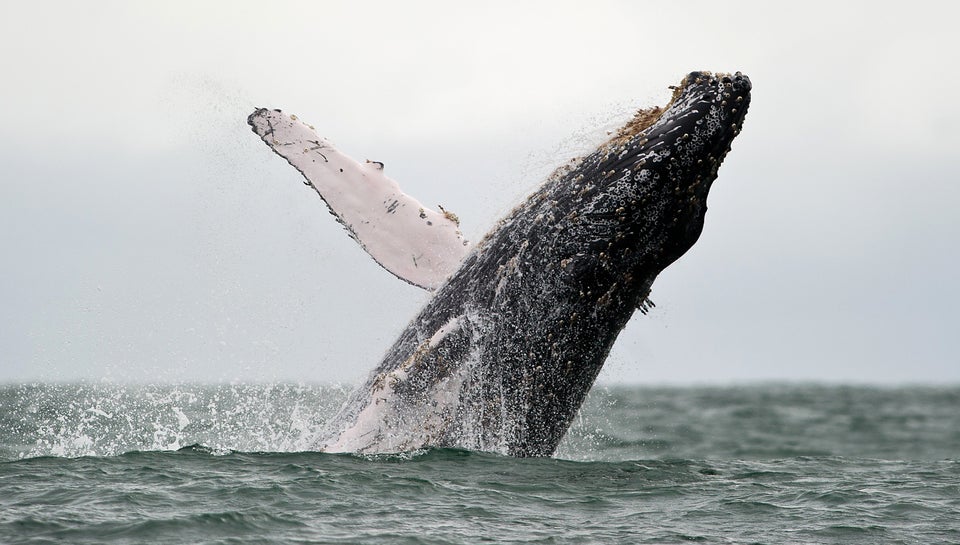
On Saturday, January 19, the highly-anticipated documentary Blackfish made its world premiere at the Sundance Film Festival to a packed and enthusiastic house. The movie, entered into the U.S. documentary competition, brings the story of the killer, killer whale Tilikum to the big screen.
Tilikum, SeaWorld’s 12,000-pound breeding bull, has now been involved in the deaths of three people, including orca trainer Dawn Brancheau in Orlando. That 2010 tragedy, reported around the globe, brought new awareness to what life is really like for orcas in captivity.
Gabriela Cowperthwaite, the film’s director, was working on Blackfish at the same time I was researching my book, Death at SeaWorld, and our paths crossed often, in Florida—home of Shamu—and the Pacific Norwest, where “real” orcas live. By all accounts, she and producer Manny Oteyza have created a powerful and stirring narrative on the potential hazards of keeping killer whales captivity—to humans and the amazing animals themselves.
Blackfish is sure to advance the growing twenty-first century debate over this decidedly twentieth century practice. It has also been singled out as one of the must-see movies at Sundance. In the film’s first review, IndieWire gave Blackfish an A-, compared it to The Cove, and said it makes “the unsettling case that SeaWorld's live acts of entertainment are in fact a expensively veiled form of torture.”
Cowperthwaite was kind enough to take time out from her dizzying schedule in Park City to answer a few questions from TakePart.
TakePart: Let me start with the question you will be asked ad nauseum: What was it that first inspired you to make this movie?
Gabriela Cowperthwaite: I learned about the event in the news, then read an article in Outside Magazine by Tim Zimmermann. It shocked me. I started making the film because I was trying to answer a question. Why was a senior trainer killed by such a highly intelligent animal, an animal with whom she presumably had a relationship? Maybe even a good relationship?
TakePart: Blackfish centers on one captive killer whale, Tilikum. Do you think his life is emblematic of other orcas in captivity, or was there another reason you chose him?
Gabriela Cowperthwaite: I initially chose to focus on Tilikum because of the death of Dawn Brancheau. I knew nothing about his past or his behavior, but his story just happened to scream the loudest. Why would such a highly emotional, intelligent animal bite the hand that feeds it? It was bizarre. It was scary. Later, when I started peeling back the onion, I realized he gave me a powerful point of entry but the story was about so much more than Tilikum.
TakePart: What was the most surprising thing you learned about wild orcas while making this movie?
Gabriela Cowperthwaite: It's scary how little I knew. I knew they were intelligent, mischievous, and I knew some outdated pop science about their sonar capabilities. Once I started filming, I couldn't believe several things; that they can live to be 100, that males live with their mothers their entire lives, that there's every indication that they speak different languages, but I think the most amazing fact I learned was that they have a part of the brain that we don't have—a part that we can't even identify. This suggests that they sense, understand, and even feel more than we do. It still blows me away to think about it.
TakePart: What about orcas in captivity?
Gabriela Cowperthwaite: I remember being very surprised by how killer whales often don't get along in captivity with other killer whales—that in such a close space, they have to work out their differences all the time within the confines of the tank. Two 8,000 pound animals vying for dominance? That's a pretty terrifying prospect.
TakePart: Did you try to speak with SeaWorld officials?
Gabriela Cowperthwaite: I did but was denied an interview.
TakePart: I know you travelled a great deal to produce this film—I saw you and your crew at the OSHA trial in Orlando, and on San Juan Island, in Washington State, twice. How did you get funded?
Gabriela Cowperthwaite: We made the movie because of the support of two investors who believed in the project from the beginning. They had faith and foresight. We were lucky.
TakePart: You have done virtually no media prior to the premiere, yet Blackfish continues to build terrific buzz, in Hollywood, online and in the whale and dolphin advocacy community. Why do you think that is, and how does that bode for wider public attention when the film is released?
Gabriela Cowperthwaite: It's a very good question. I truly don't know why or when the public is ready to hear about a certain subject. I just knew that I needed to tell the story. The book Death at Sea World is a game changer, the OSHA trial put the issue of trainer safety on the map, some things are certainly suggesting that people are doing double takes—wondering about this grand experiment we've been conducting for half a century.
TakePart: Do you think that captivity itself is what drove Tilikum and other orcas to turn against their trainers?
Gabriela Cowperthwaite: Well no one has ever been killed by an orca in the wild. Only in captivity. That's a fact.
TakePart: What basic message would you like people to take away from the theater after watching Blackfish?
Gabriela Cowperthwaite: I stumbled upon this story. I had taken my kids to Sea World before so I didn't come into the film with an agenda. I came in with a question. Making this film changed me but I didn't make it with the intention that it would change you. I simply told the story. And I can't say I am trying to make you take a stand. I can only hope that after seeing Blackfish, if you go to these parks, you're no longer making a passive decision. You're not being lured by the iconic symbol of a happy Shamu. You're now an actively thinking consumer. You now know the truth.
TakePart: Have you heard anything from SeaWorld? How do you think they will react to this film?
Gabriela Cowperthwaite: I don't know how they’ll react to the film.
